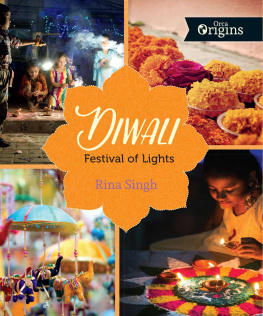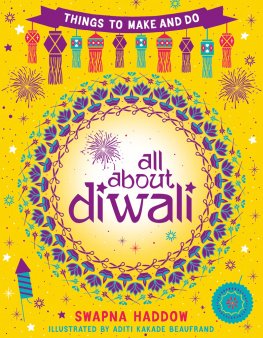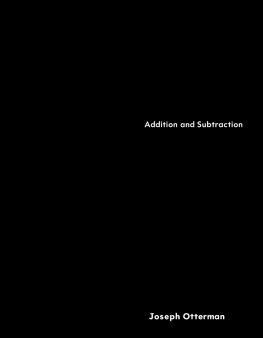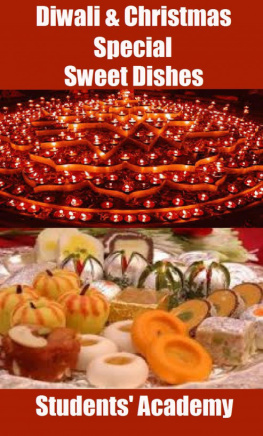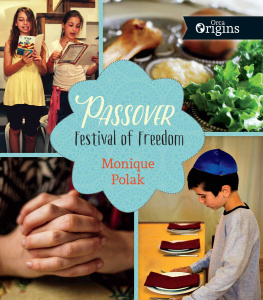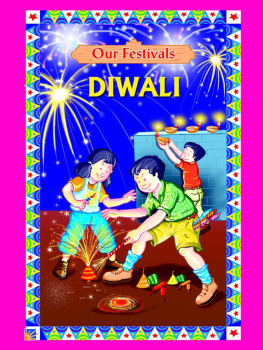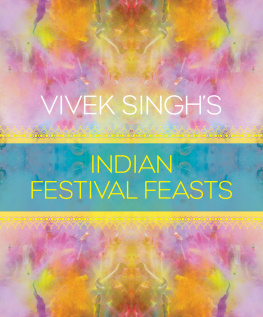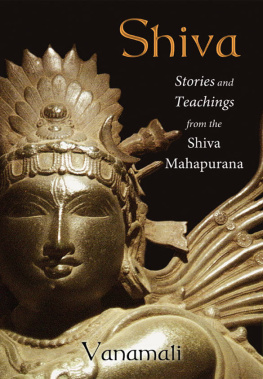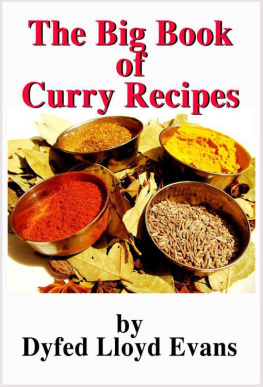Acknowledgments
This book would not have been possible without the help of many people. Special thanks to Amrita Singh, M.S. Sodhi and Joginder Sharma for going out on Diwali and taking pictures in Toronto and in India.
Special thanks to Cindy Ryan, Swati Khurana, Sapna Alim, Aditya Rattan and Nimrat Randhawa for sharing their stories with me. Thanks to Shiva and Jennifer Mahadeo for teaching me about Diwali in Trinidad.
Thanks to Monique Polak, who read early drafts of this book, and Marilyn Pinchuk for reading the later ones.
And a very special thanks to Chef Vikram Vij, the Canadian culinary legend, for allowing me to use two of his festive recipes for this book and to Dheeraj Paul for letting me use his photograph of the Golden Temple.
Thanks also to the entire team at Orca Book Publishers, especially Rachel Page, the designer, and Sarah Harvey, my amazing editor, who spotted every mistake and asked all the right questions, pushing me to dig deeper into the story of Diwali.
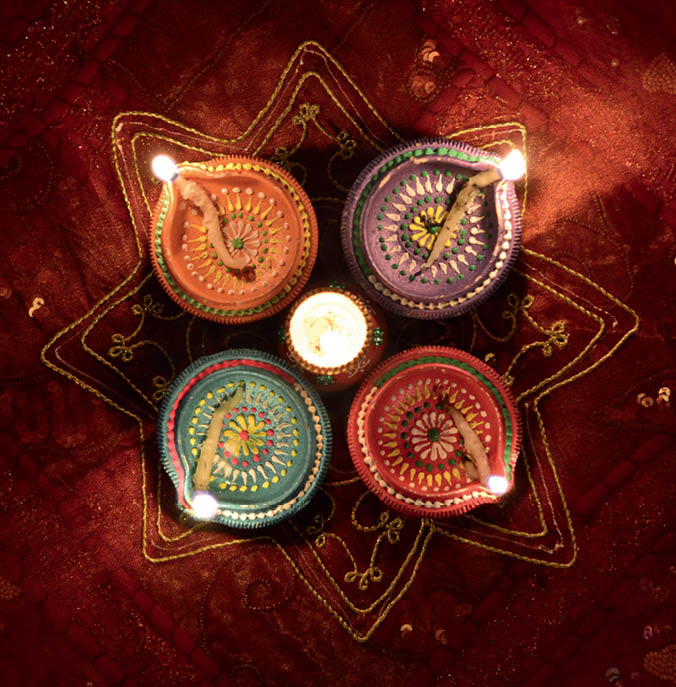
Diwali lights. Joat/Shutterstock.com
Text copyright 2016 Rina Singh
All rights reserved. No part of this publication may be reproduced or transmitted in any form or by any means,electronic or mechanical, including photocopying, recording or by any information storage and retrieval system now known or to be invented, without permission in writing from the publisher.
Library and Archives Canada Cataloguing in Publication
Singh, Rina, 1955, author
Diwali: festival of lights / Rina Singh.
(Orca origins)
Includes index.
Issued in print and electronic formats.
ISBN 978-1-4598-1007-5 (bound).ISBN 978-1-4598-1008-2 (pdf).ISBN 978-1-4598-1009-9 (epub)
1. DiwaliJuvenile literature. I. Title.
bl1239.82.d58s56 2016 j294.5'36 c2016-900499-6
c2016-900500-3
First published in the United States, 2016
Library of Congress Control Number: 2016931882
Summary: Enlivened by personal stories, Diwali illuminates and celebrates how Hindu, Sikh and Jain traditions are kept alive in the modern world in this work of nonfiction for middle readers.
Orca Book Publishers gratefully acknowledges the support for its publishing programs provided by the following agencies: the Government of Canada through the Canada Book Fund and the Canada Council for the Arts, and the Province of British Columbia through the BC Arts Council and the Book Publishing Tax Credit.
Design by Rachel Page
Front cover photos by Getty Images, iStock.com, Dreamstime.com
Back cover photo by Amrita Singh
ebook by Bright Wing Books (www.brightwing.ca)
ORCA BOOK PUBLISHERS
www.orcabook.com
For Monique, who lights up my life
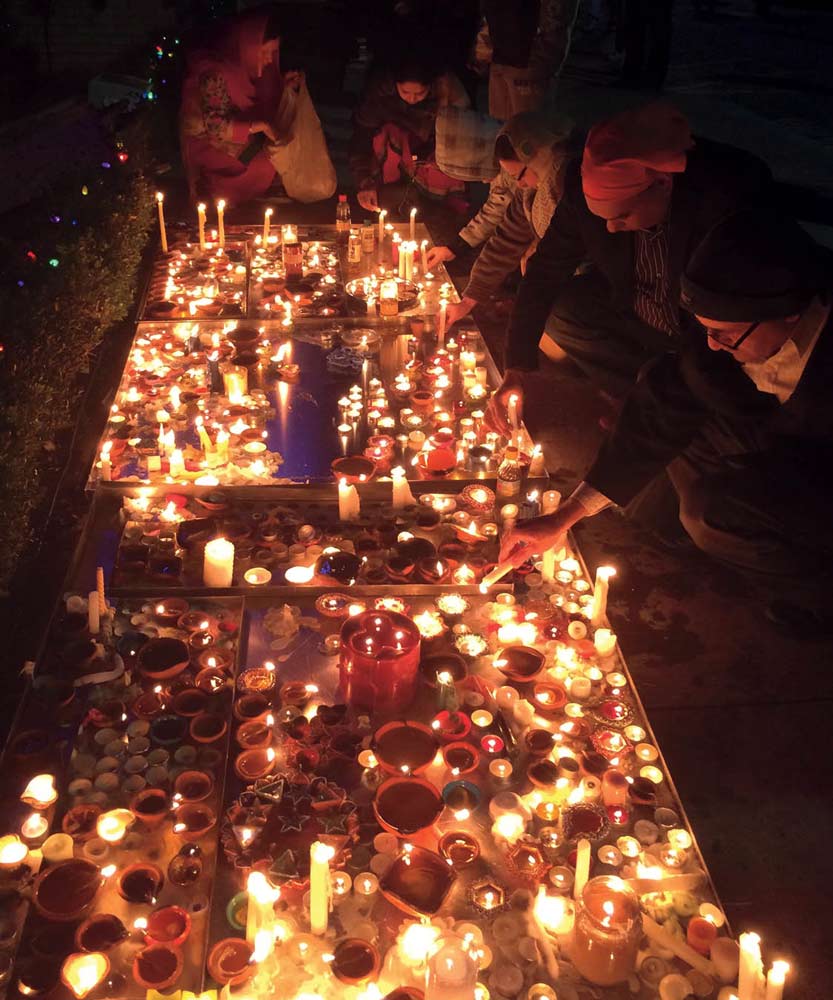
Lights of Diwali. Rina Singh
Introduction
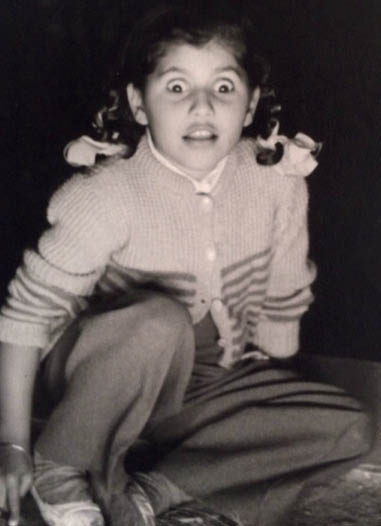
Looking at Diwali lights. I think my father totally captured my amazement. B.S. Sodhi
When I was a child growing up in India, Diwali was not only the most important festival and lasted the longest, but it was also my favorite. The word Diwali comes from the Sanskrit words deepa, meaning light, and vali, meaning row.
A row of lights. Thats how I remember the festivalas an endless row of lights.
There was something magical about Diwalithe lights, the shopping, the sparklers, the fireworks and mithai , the sweets that gave me a sweet tooth. Schools closed down for ten days before Diwali and we felt the excitement in the air.
My favorite memory is watching my mom pour mustard oil into diyas , or oil lamps made of clay, and arrange cotton wicks in them. She then set them in large platters called thaalis that I eagerly carried to my father. I stood by his side as he lit the diyas and placed them around the house. After that I would stand back and let myself be dazzled by the lamps lighting up the darkest night of the month.
Then we all gathered in my moms puja , or prayer, room to offer prayers to Lakshmi, the goddess of wealth. The room also had pictures of the Sikh gurus , or spiritual teachers. My mother is Hindu and my father is Sikh. Sikhs believe in one god, and Hindus worship millions of gods and goddesses. No one told me to pray to any god in particular. I just prayed because everyone around me did. It didnt occur to me to question if we were celebrating a Hindu Diwali or a Sikh Diwali. It was just Diwali.

My mothers prayer (puja) room with pictures of the goddess Lakshmi and Guru Nanak side by side on Diwali night. M.S. Sodhi
Then I grew up, got married and moved to Canada in 1980. For many years after leaving India, Diwali lost its luster. Friends took turns hosting Diwali dinner and that was it. No lights, no sparklers, no prayers. Years passed.
One day, my daughter Amrita, who was in grade one at the time, came home and asked me, Mom, what is Diwali? Her question made me realize what I had left behind and what I could lose if I didnt make changes. Ever since that day I have celebrated Diwali with such devotion that even my non-Indian friends and their children have grown to love the festival.
So when the opportunity to write this book came my way, I felt the goddess Lakshmi was shining a light on me.
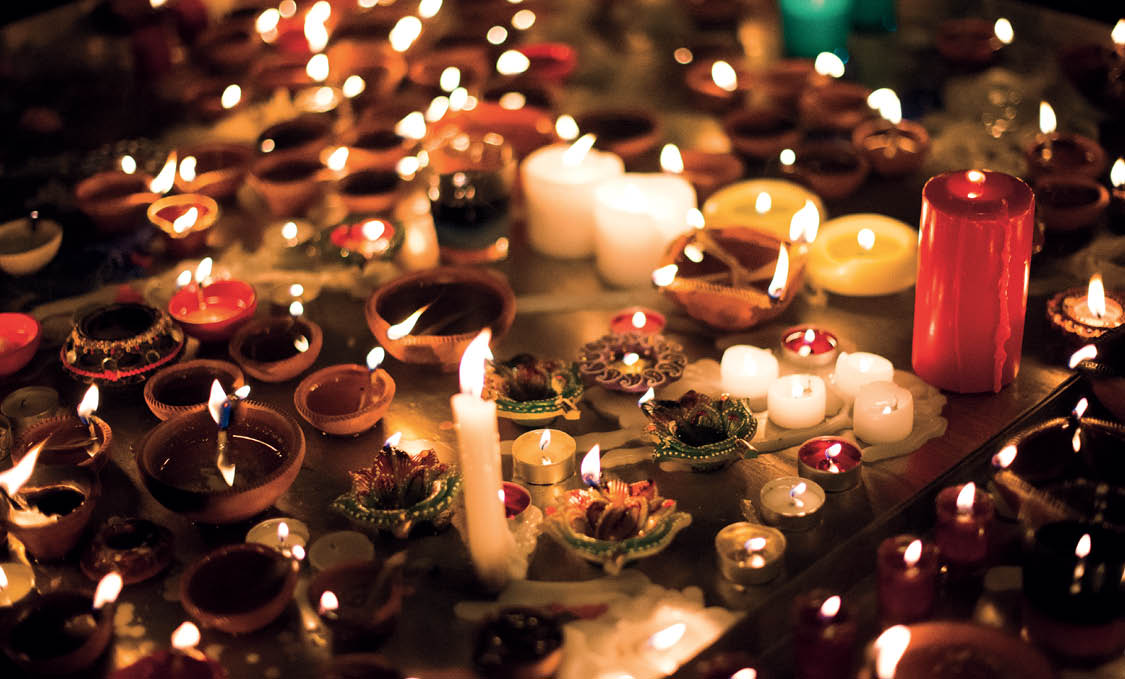
Diwali lights. Amrita Singh
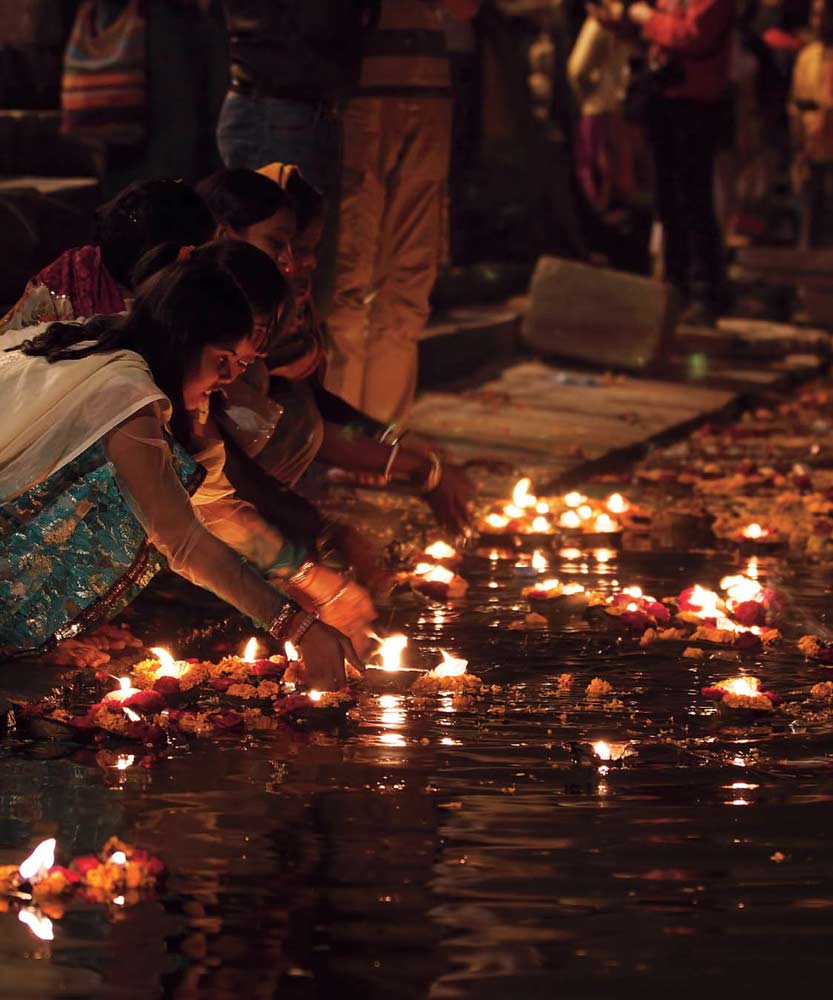
Diyas, or oil lamps, are put on small boats made of leaves and set afloat on the Ganges River in Varanasi. SoumenNath/iStock.com
one
What is diwali?
The Hindu Legends of Diwali
Every year, in October or November, most Indians come together to celebrate Diwali. The dates vary from year to year as Diwali falls on the fifteenth day of the month of Kartika in the Hindu calendar. The calendar is based on the position of the sun and the moon. Diwali is celebrated on amavasya , the darkest night of the month. Originally a harvest celebration, Diwali has evolved into the biggest and the brightest of all Indian festivals. The several Hindu legends of Diwali celebrate the victory of good over evil and light over darkness. For Sikhs, Diwali marks the release of their sixth guru, Guru Hargobind, from prison. Jains celebrate Lord Mahaviras nirvana , or salvation from the cycle of life and death. No matter what the story, Diwali is a joyful holiday.
Buddhists also celebrate Diwali, because on this day in 256 BCE , Hindu emperor Ashoka gave up the path of violence and converted to Buddhism. He was instrumental in spreading Buddhism in India and abroad. The Ashoka chakra, a 24-spoke wheel representing the teachings of Buddha, is at the center of the Indian flag.
Ramas Legend
On Diwali, people in North India celebrate the story of Rama.
In ancient times, Ravana, a mighty asura , or power-seeking deity, who had been granted powers over gods and demons by Lord Shiva, ruled Lanka (now known as Sri Lanka, a teardrop-shaped island at the southern tip of India). According to Hindu mythology, Ravana was a tyrant. His tyranny on Earth disturbed the gods, and they decided to send Lord Vishnu in the guise of a human to restore order.

